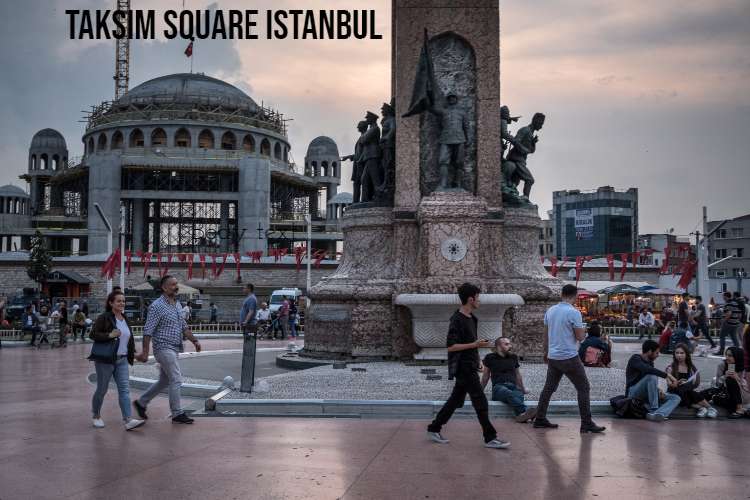Turkey
Taksim Square: A Cultural and Historical Epicenter of Istanbul

Takssim Square istanbul, situated in the heart of Istanbul, Turkey, stands as a vibrant hub of culture, history, and modernity. This iconic public space has played a pivotal role in shaping the identity of Istanbul and has been witness to significant historical events, cultural movements, and social gatherings. In this comprehensive exploration, we delve into the rich tapestry of Taksim Square, tracing its origins, evolution, and enduring significance in the fabric of Istanbul’s urban landscape.
Origins and Historical Significance
Ottoman Era Roots:
Takssim Square istanbul traces its origins back to the Ottoman era when it served as a vital junction connecting various parts of the city. Initially known as the “Water Distribution Point,” Taksim emerged as a central gathering place where locals would congregate to access clean water from the numerous fountains in the area.
Modernization Efforts:
In the late 19th century, during the reign of Sultan Abdul Hamid II, Taksim underwent significant modernization efforts, transforming it into a prominent public square. The construction of the Taksim Military Barracks and the Taksim Artillery Barracks further solidified its importance as a strategic and symbolic location in Istanbul.
Transformation and Development:
Throughout the 20th century, Takssim Square istanbul continued to evolve, witnessing periods of transformation and development. The construction of the Atatürk Cultural Center (AKM) in the 1960s and the installation of the iconic Republic Monument in 1928 further enhanced its cultural and architectural significance.
Cultural Landmarks and Attractions
Republic Monument (Cumhuriyet Anıtı):
Dominating the center of Taksim Square, the Republic Monument stands as a symbol of Turkey’s transition to a republic following the fall of the Ottoman Empire. Designed by Italian sculptor Pietro Canonica, the monument features a central column adorned with allegorical figures representing the principles of liberty, independence, and the republic.
Atatürk Cultural Center (AKM):
The Atatürk Cultural Center, commonly known as AKM, is a prominent cultural and arts venue located on the northern edge. Taksim Square Designed by architect Hayati Tabanlıoğlu, AKM hosts a diverse range of performances, exhibitions, and events, serving as a focal point for artistic expression and creativity in Istanbul.
Gezi Park:
Adjacent to Taksim Square lies Gezi Park, a verdant oasis amidst the bustling urban landscape. Originally established as a military barracks garden in the 19th century. Gezi Park has evolved into a popular recreational space, offering respite and relaxation for locals and visitors alike.
Istiklal Avenue (Istiklal Caddesi):
Istiklal Avenue, a bustling pedestrian thoroughfare, extends from Taksim Square and stretches for approximately 1.4 kilometers to the historic neighborhood of Beyoğlu. Lined with shops, restaurants, cafes, and historical buildings, Istiklal Avenue is a vibrant cultural and commercial hub, attracting millions of visitors each year.
Social and Political Significance
Political Demonstrations:
Taksim Square has long served as a focal point for political demonstrations, protests, and rallies. Reflecting its significance as a symbol of civic engagement and activism in Turkey. Notable events include the May Day protests. The Gezi Park protests of 2013, and various labor strikes and political gatherings throughout history.
Cultural Festivals and Celebrations:
In addition to political activism, Taksim Square hosts a variety of cultural festivals, celebrations, and public events throughout the year. From concerts and performances to religious observances and national holidays. Taksim Square serves as a dynamic platform for showcasing Turkey’s rich cultural heritage and diverse traditions.
Symbol of Unity and Diversity:
Taksim Square stands as a symbol of unity and diversity, bringing together people from all walks of life regardless of religion. Ethnicity, or socio-economic background. Whether for social gatherings, celebrations, or moments of solidarity. Taksim Square serves as a unifying force that transcends boundaries and fosters a sense of community.
Preservation and Future Prospects
Urban Redevelopment:
As Istanbul continues to undergo rapid urbanization and development, the preservation of Taksim Square’s cultural and historical heritage remains a pressing concern. Efforts to balance modernization with preservation are essential to safeguarding the square’s unique character and identity for future generations.
Community Engagement:
Community engagement and public participation are critical in shaping the future of Taksim Square and ensuring that it remains. A vibrant and inclusive space for all. Encouraging dialogue, collaboration, and grassroots initiatives can empower local communities. To play an active role in the stewardship of this iconic public space.
Conclusion
Taksim Square stands as a timeless symbol of Istanbul’s rich history, cultural diversity, and spirit of resilience. From its Ottoman-era roots to its role as a nexus of political activism and cultural expression. Taksim Square embodies the essence of Istanbul’s past, present, and future. As stewards of this iconic public space, it is incumbent upon us to preserve its legacy.

-

 Sports8 months ago
Sports8 months agoTaraftarium24 Kralbozguncu: A Comprehensive Review of Live Sports Streaming Platforms
-

 Biography7 months ago
Biography7 months agowhatutalkingboutwillistyle the lifestyle
-

 Entertainment8 months ago
Entertainment8 months agoRepelis24: Redefining Online Movie Streaming with a Wealth of Content
-

 Sports7 months ago
Sports7 months agoCanlı maç izle
-

 Entertainment7 months ago
Entertainment7 months agoJojobet TV
-

 Education8 months ago
Education8 months agounsuccessful draft pick
-

 FOOD9 months ago
FOOD9 months agoMaslaaseen: Embracing Diversity and Unity
-

 Sports7 months ago
Sports7 months agoMatbet TV APK